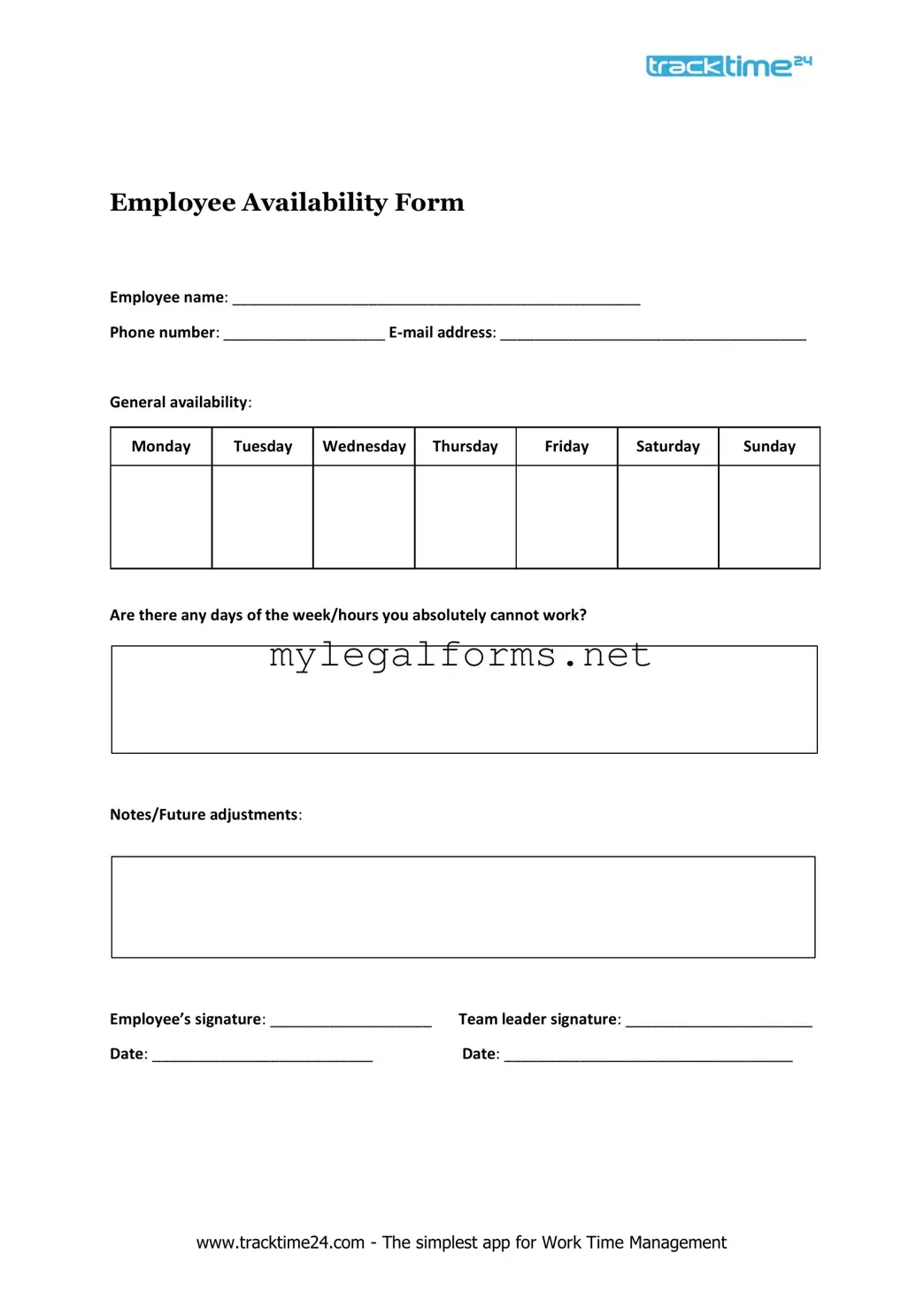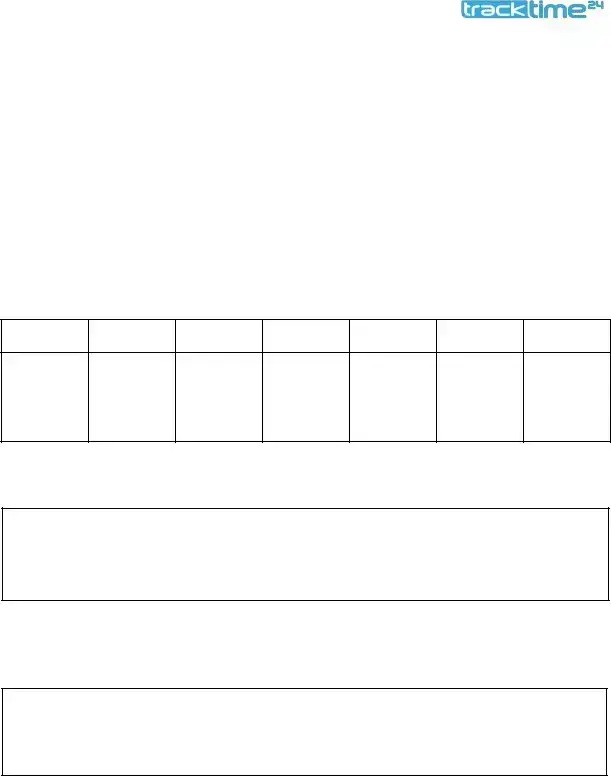Completing the Employee Availability form accurately is crucial for both employees and employers. However, many individuals make common mistakes that can lead to scheduling conflicts or misunderstandings. Understanding these pitfalls can help ensure a smoother process.
One frequent error is incomplete information. Employees may forget to fill out all sections of the form, such as preferred working hours or days off. This lack of detail can create confusion for managers trying to create schedules that accommodate everyone’s needs.
Another mistake involves inconsistent availability. Some employees might list availability that changes frequently without communicating those changes. This inconsistency can lead to frustration for both parties when schedules are created based on outdated information.
Additionally, many people fail to consider their personal commitments when filling out the form. It’s essential to account for appointments, family obligations, or other responsibilities that might affect availability. Neglecting to do so can result in missed shifts or the need for last-minute changes.
Some employees also underestimate the importance of clear communication. They might assume that their managers understand their availability without providing enough context. Clear notes about specific needs or preferences can prevent misunderstandings and improve scheduling efficiency.
Another common mistake is not updating the form regularly. Life changes, and so does availability. Failing to submit a revised form when circumstances change can lead to scheduling issues and dissatisfaction for both employees and employers.
Lastly, some individuals overlook the importance of honesty when indicating their availability. Employees may want to appear more flexible than they truly are, which can lead to burnout or resentment. Being truthful about availability helps create a more sustainable work environment.
By being mindful of these common mistakes, employees can contribute to a more effective scheduling process. Taking the time to fill out the Employee Availability form accurately benefits everyone involved.

